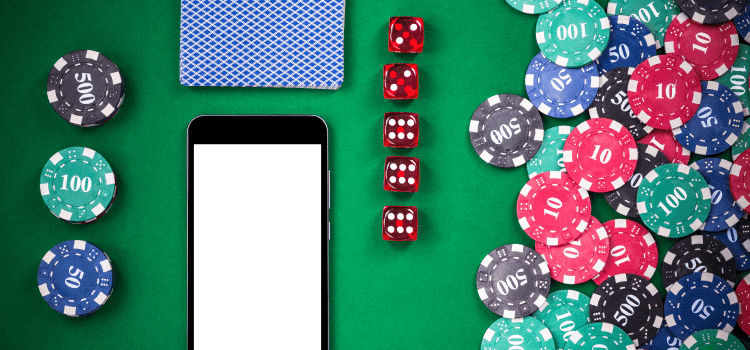Roulette is considered to be one of the most popular casino games. But what is the origin of roulette, who developed it, and how did it become the game we know today? First, let’s take a look at the history of roulette and how it has evolved.
The Roulette Origin
In the following sections, I’ll discuss Roulette history in China, Ancient Rome, Ancient Greece, France, and America.
China
Many believe roulette is based on an old Chinese board game where 37 animal miniatures were arranged on a magic square with 666 numbers.
Eventually, the game was brought to Europe, with minor changes, by Dominican monks who were heavily involved in Chinese society.
It’s not known how exactly the original Chinese game was played. However, by turning the square into a circle, the monks created a space specifically for the number zero.
French roulette has always had a zero and a double zero, so implying that the ancient Chinese game is still in use is most likely false. However, in spite of this, the numbers on a contemporary roulette wheel add up to 666, which is an enigmatic number.
Ancient Rome
Soldiering in ancient Rome was not an enjoyable or interesting profession. Soldiers had to deal with injuries and the loss of their comrades in battles. In addition to lowering the soldiers’ morale, this had an adverse effect on their fighting abilities.
Soldiers played various gambling games, and one of the games was fairly similar to modern-day roulette. Shields had symbols written on the inside and were set face down on the ground with an arrow next to them. Soldiers would spin the shield and bet on the symbol that would eventually stop in front of the arrow.
Although this game has a connection to roulette, there isn’t enough evidence to prove that roulette’s history started in Rome.
Ancient Greece
Greek soldiers also enjoyed playing games. Just like Roman soldiers, they played a similar game, but there isn’t enough evidence to prove that roulette originated in Greece or Rome.
France
Roulette’s origin is unmistakably French, hence its name. However, its design and gameplay are influenced by two similar games popular in 17th-century Europe. Roly Poly and Even-Odd both involved spinning a wheel and wagering on the outcome. The wheel was designed by Blaise Pascal, who was a well-known gambler.
Due to the prohibition of gambling in many European nations during that time, it wasn’t very popular. To solve some of his financial problems, Prince Charles of Monaco came up with the bright idea of utilizing the growing popularity of gambling.
In those casinos, roulette was nearly identical to the one we play today. Even the betting options were virtually identical. Numbers ranged from 1 to 36, with one zero and one double zero pocket and red and black colors.
America
In the 19th century, roulette started flourishing in America, and New Orleans quickly became the gambling center. There were only 28 numbers in the earliest forms of the game, along with a zero, double zero, and an eagle symbol. The eagle, the American symbol of liberty, increased a casino’s house edge. However, the eagle was soon eliminated and replaced by a regular numbered slot. This version of the game gave way to the European version with numbers 1–36.
Additionally, the American style of play was different from the European style. The game evolved in Monte Carlo casinos, offering a sophisticated and leisurely experience. In American territories, however, the game was played in gambling dens. The wheel was placed on the table to prevent both players and operators from cheating. That way, it wasn’t possible to hide any devices under the table or wheel. The layout of American roulette was also simplified, allowing the game to be played more quickly.
In Europe, the roulette wheel included just a single zero, while in the US, the double zero roulette, with its higher house edge, remained dominant. Modern European and American roulette differ primarily in this regard. Canada, the Caribbean, and South America also play the American version of the game. Other parts of the world, however, prefer the single zero version.
Evolution of the Roulette’s Zeros
It wasn’t until the mid-19th century that the zero appeared on the roulette wheel. For centuries, Pascal’s roulette wheel remained the same. Finally, a single zero was added to the roulette wheel in 1842, designed by Francois and Louis Blanc for Charles III, Prince of Monaco. Due to the fact that adding a zero increased the house advantage, this was a big deal.
Since the kingdom faced financial difficulties, Charles built a casino and brought roulette to the masses. As a result, Monaco generated substantial income from the wheel, quickly becoming a symbol of upscale gambling. Moreover, the single zero roulette wheel was released just as France outlawed gambling, making Monte Carlo even more desirable.

Online Roulette
Online casinos have allowed anyone to play their favorite games from home in recent years. New casino platforms are being introduced every month, and roulette fans are spoilt for choice. Regardless of location, you can now play European, American, and all other types of roulette online. Furthermore, playing the game online has a number of advantages over playing it at a brick-and-mortar casino.
First of all, you aren’t distracted by all the noises at a real casino, meaning you can concentrate better on your strategy. Also, online games are fully automated, so you don’t have to pay attention to the dealer and chip sweeping constantly. That is unless you’re playing live dealer roulette online.
Special institutions ensure that the games you play aren’t rigged in any way as far as the odds and general fairness of the game are concerned.
For example, licensed and certified casinos are safe to play at. Also, you get useful information about roulette probability, payouts, and other important topics.
Live Dealer Roulette Games
Although online casinos have numerous benefits, one element is missing—the atmosphere of a real casino. Although playing at an online casino is convenient, it can be less exciting than playing in a brick-and-mortar casino. Since the new millennium, some online casinos have offered live streaming to address this issue. VueTec was among the first companies to offer real games to online casinos. First, a webcam was used to stream games from a land-based casino. Then, rather than using an electronic random number generator to determine the winning number, online casinos allowed players to bet on the games.
However, there were significant weaknesses to this first attempt to provide live games to online casinos. To avoid disturbing the players, casino operators mounted cameras high above the table, or on the ceiling, above the table. The distance between the camera and the table made it difficult for online players to see the table clearly. It was also impossible for online players to interact with the dealer. In terms of video streaming quality, there was a lot of room for improvement. Due to slow internet connections at the time, high-quality streaming wasn’t possible, affecting the overall experience.
A dedicated live casino studio wasn’t introduced until 2006, however. Casino games with real dealers were first introduced to online casinos by Evolution Gaming, the current market leader. Streaming live games from a dedicated studio had significant advantages. Better placement of cameras allowed online players to view the game more clearly. Additionally, multiple cameras were used to show the table from different angles.
This approach prevented other players from blocking the view, making the game and the croupier visible. In addition, it was possible to interact with the dealer for the first time. Undoubtedly, those improvements brought the real casino experience closer to players.
Conclusion
In the 21st century, roulette is one of the most popular casino games, so much so that it has become a hallmark of the traditional casino over the years. Generally, the American-style double zero wheels are used primarily in the US, Canada, South America, and the Caribbean. In contrast, the single zero European-style wheels are used in the rest of the world.
It’s still quite common for updates and new versions of roulette rules to be released. In 2016, for example, the Venetian Las Vegas casino introduced the first-ever roulette wheel featuring 39 numbers, including a triple zero (000), which has since been adopted by many other casinos. If you want to learn how to play this game, check the article about different types and strategies for Roulette.
FAQ
What was roulette originally called?
Roulette is most likely of French origin, hence its name. In spite of this, the game is influenced by two very similar games that were very popular in Europe during the 17th century. These games were called Roly Poly and Even-Odd, and both involved spinning the wheel and betting on the outcome.
When was roulette invented?
The history of roulette goes back to 18th-century France. It’s believed that Blaise Pascal’s search for a perpetual motion machine in the 17th century led to the introduction of roulette. In 1720, a gaming wheel and the Italian game Biribi were combined to create the roulette mechanism.
















